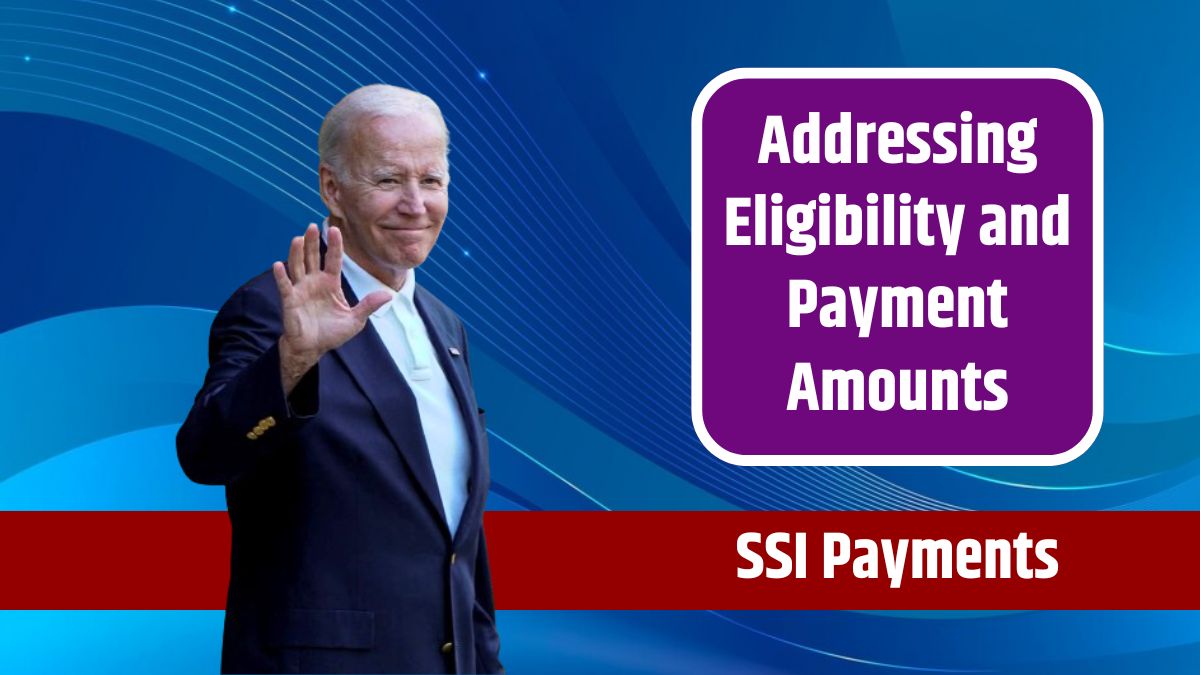The Supplemental Security Income (SSI) program offers financial aid to individuals with significant disabilities, helping them navigate the challenges of earning a living. Managed by the Social Security Administration (SSA), this program ensures that those facing severe physical or mental impairments can receive financial support when their condition makes it difficult to work and maintain an income. SSI is a lifeline for many, offering a degree of financial stability for individuals whose health conditions prevent them from supporting themselves.
The next SSI payment date is set for October 1. Recipients should expect funds on this date, which includes millions of people nationwide. Interestingly, SSI payments are issued early when the scheduled date falls on a weekend or holiday, as was the case for September, where payments were made on August 30 instead.
Contents
- 1 October Payment
- 2 Determining SSI Eligibility
- 3 Specific Health Covered
- 4 Key Differences
- 5 Inflation-Adjusted
- 6 October Payments
- 6.1 Social Security Maximum Benefit for Full Retirement Age Workers – Changes Following the 2025 COLA Increase
- 6.2 FAQs
- 6.3 What’s the maximum SSI payment for singles?
- 6.4 How much can couples get from SSI?
- 6.5 What’s the 3.2% increase for?
- 6.6 Can I get both SSI and Social Security?
- 6.7 How do I know if I qualify for SSI?
October Payment
SSI payment amounts vary based on an individual’s circumstances. Single beneficiaries can receive up to $943 monthly, while couples are eligible for up to $1,415. If someone is an essential person, meaning they care for an SSI recipient, they can receive up to $472 per month. The payments for this year include a 3.2% cost-of-living increase, addressing inflationary pressures that have impacted daily living expenses like rent, groceries, and medical care.
This increase, while modest, is crucial for many SSI recipients, providing necessary financial relief in times of high inflation.
| Beneficiary Type | Monthly Payment | 3.2% Increase Applied |
|---|---|---|
| Single Beneficiary | $943 | Yes |
| Couples | $1,415 | Yes |
| Essential Persons | $472 | Yes |
Determining SSI Eligibility
Eligibility for SSI depends on both medical and financial conditions. Applicants must meet health-related criteria, including being at least partially blind, having a mental or physical condition that limits daily activities for at least 12 months, or having a condition that could be fatal. These strict criteria ensure that only those with severe disabilities qualify for SSI.
Aside from medical requirements, applicants must meet financial qualifications. SSI targets individuals without other means of financial support. Therefore, an individual’s income and assets are evaluated. Most recipients earn less than $1,971 per month from work, and additional sources of income, such as disability benefits, pensions, and unemployment, are also considered.
Here’s a quick glance at the eligibility requirements:
| Eligibility Criteria | Requirement |
|---|---|
| Health Status | Blind, severely disabled, or terminal condition |
| Income Cap (individual) | $1,971/month or less from work |
| Income Cap (couple) | Higher income thresholds apply for couples |
| Age Requirement | Disabled or over 65 |
| Citizenship or Residency | Must be a U.S. citizen, national, or qualified alien |
Specific Health Covered
The SSA maintains a detailed list of conditions that qualify for SSI benefits. These conditions must either be included in their list of disabling impairments or be equally severe. For adults under 65, a disability that affects work for at least 12 months is a must. Children may also qualify if their condition severely limits their daily activities. It’s important to note that U.S. citizens over 65 can receive SSI without being disabled, provided they meet the financial qualifications.
Key Differences
SSI often gets confused with other Social Security programs like retirement or disability benefits, but they are distinct. Unlike Social Security benefits, which rely on prior work contributions, SSI is available even if an individual has never contributed to Social Security. It’s aimed at helping low-income individuals who may not qualify for other forms of financial aid, particularly those with severe disabilities.
This distinction is important because receiving Social Security doesn’t automatically qualify someone for SSI. Each program serves different purposes, and eligibility for one doesn’t guarantee benefits from the other.
Inflation-Adjusted
A significant aspect of the SSI payments this October is the 3.2% adjustment. Inflation has increased the cost of living, making it harder for recipients to cover basic needs such as housing, food, and medical care. The 3.2% boost in payments is intended to help offset these rising costs. While it may seem small, this increase is a vital improvement for many individuals relying on SSI payments for daily survival.
October Payments
If you receive SSI payments, it’s important to stay on top of your finances by confirming your bank details and ensuring no errors occur with your payment. Make sure your eligibility remains intact by reviewing your financial situation annually—any major changes could impact the amount of SSI you receive. For those who may be eligible but haven’t applied yet, it’s never too late. Though the application process can be lengthy, it’s crucial for those needing financial support.
SSI offers essential aid for those with disabilities, and staying informed on how to maintain eligibility is the first step in securing that support.
FAQs
What’s the maximum SSI payment for singles?
$943 per month is the highest amount for individuals.
How much can couples get from SSI?
Couples can receive up to $1,415 per month.
What’s the 3.2% increase for?
The increase helps offset inflation impacts on daily expenses.
Can I get both SSI and Social Security?
No, receiving Social Security doesn’t guarantee SSI eligibility.
How do I know if I qualify for SSI?
Eligibility depends on disability, income, and residency status.













